|
A die-hard movie and TV fan, Steve Mitchell has enjoyed a variety of careers over the years. Most famously, he was one of the writers of the cult classic Chopping Mall along with its director, Jim Wynorski, with whom he reteamed on such additional Roger Corman films as Transylvania Twist, The Haunting of Morella, and Munchie. He also served as writer on some of the '80s' most popular animated TV shows like G.I. Joe and Transformers and most recently produced extensive releases of TV classics on DVD like Combat! and Thriller. Come along, if you dare, for a tale of rampaging robots, scream queen casting, and swamp things.
MONDO DIGITAL: How did you first meet Jim Wynorski?
STEVE MITCHELL: I met Jim at a convention in New York City in the ‘70s; it might have been at the EC Con, which was a convention devoted to EC Comics. We were part of the New York fan scene, which is where we bumped into one another and got kind of chummy.
And you both wound up in Los Angeles?
Remember that movie All the Right Moves? He worked for that company and moved to California not long after that was released. I moved to California in 1983 from New York, and it wasn’t long after that Jim called me about making this shopping mall movie.
Since Chopping Mall was Jim's second film (after The Lost Empire), what kind of pressure was there from Roger Corman?
I think we both felt a pretty fair amount of pressure when we started shooting. It was Julie’s picture, but it was still Roger’s company, and he was the bottom line. We both very much wanted to make him happy, Jim even more than myself. Jim had been with Roger as his publicity director and decided to make movies rather than sell them. The specter of Roger loomed large for the first couple of days; we went to his office to watch dailies before we went to the mall to shoot. It might’ve been the second or third night, Roger said to us, "Jim, Steve, you’re doing a very fine job. Keep it up." So there was a collective sigh of relief on our part that we were making Roger happy, and that’s what really mattered.
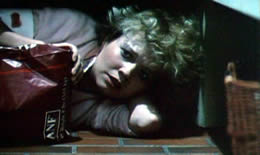 Jim Wynorski mentions two inspirations for the film, Gog and the made-for-TV movie Trapped. Would you agree those were the strongest influences on the story? Jim Wynorski mentions two inspirations for the film, Gog and the made-for-TV movie Trapped. Would you agree those were the strongest influences on the story?
Those movies were in Jim’s head. I’ve never seen Trapped then or since, and I saw Gog when I was probably in diapers, and only parts since. I didn’t know those movies. The story behind Chopping Mall is very simple. Jim called me up one night and said that Julie Corman had a deal with Vestron for a horror movie that takes place in a shopping mall. He asked, "Do you want to see if you can come up with something?" I said "sure," so we went to the Coco’s Restaurant near the corner of Centinela and Ocean Park in Santa Monica, and in no time we came up with a "Phantom of the Mall" type of movie. Then Jim said, "Why don’t we do it with robots?" That was a bit of a curve ball, but I said, "Okay." So we sat around and figured out the story beats for Chopping Mall, which originally was going to be called Killbots (and was in an early incarnation). The production title was Robot; that was a Corman move to have a not quite exploitative type of title, but it was always Killbots to us. We worked up the story literally in a 24-hour period and gave it to Julie, literally in a 24-hour-period and gave it to Julie. She sent it to Vestron, and in less than a week we had a go picture with no script! We wrote the script in the New Horizons offices; it took maybe a month, five weeks. The script was okayed, then we went about making the movie. Thinking back now it's amazing how quickly it happened. There’s no casting credit on the movie because we did the casting. Back in the day Jim enjoyed the casting process quite a bit because an awful lot of hot women came in and out of those offices.
Roger’s Little Shop of Pets: where did that concept come from?
Jim and I thought we were so goddamn clever. There was Peckinpah’s Gun Store, too. It was just dopey stuff that young guys thought was funny. Names like that reflected LA back in the ‘80s. For example, there was always "Something King.” Furniture King, King of whatever; those were store names reflective of the Valley at the time.
Wasn't it all supposed to take place at the Beverly Center in the middle of LA?
We wrote it with the Beverly Center in mind, but then we went over and asked what they’d charge. They told us but it was very expensive; the response was a collective “time for Plan B.” The Galleria in Sherman Oaks had become popular because of Fast Times at Ridgemont High, and Commando literally was the one that immediately preceded our movie. We shot it there, but all of our exteriors are of the Beverly Center – which we stole!
Do you miss the old Galleria?
I kind of do. One thing about Chopping Mall is it’s a phenomenal document of that mall. We photographed every inch of that place. The original mall is gone but not forgotten.
Where did you get the idea of using characters from A Bucket of Blood and Eating Raoul played by Dick Miller, Mary Woronov, and Paul Bartel?
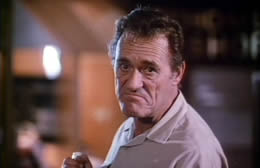 We wrote the characters with those names, and then we went to get the actors. I don’t think we had cast the actors first; we had the idea to maybe get them. I’m a huge Dick Miller fan and still believe that his scenes in the picture are hilarious. Sometimes I’m laughing louder than anyone else! And he’s a very nice guy; I loved that one night we worked with him. Paul and Mary, well, slightly different experience. Dick was basically written as a cameo. I don’t know what we paid him for the night, but there was never really any design to have him in more of the picture. If we’d wanted we probably could have had him in an earlier scene crowbarred in, but that was basically it. We wrote the characters with those names, and then we went to get the actors. I don’t think we had cast the actors first; we had the idea to maybe get them. I’m a huge Dick Miller fan and still believe that his scenes in the picture are hilarious. Sometimes I’m laughing louder than anyone else! And he’s a very nice guy; I loved that one night we worked with him. Paul and Mary, well, slightly different experience. Dick was basically written as a cameo. I don’t know what we paid him for the night, but there was never really any design to have him in more of the picture. If we’d wanted we probably could have had him in an earlier scene crowbarred in, but that was basically it.
Did Kelli Maroney's great shopping mall scene from Night of the Comet influence her casting?
I think Night of the Comet had a lot to do with it. We had cast Dana Kimmell in that part because I’d seen Lone Wolf McQuade, and she came in and was about as girl next door as it gets. I liked Dana; Julie Corman liked her, too. We had this kind of troika and basically if someone got two out of three votes, they were cast. Jim wanted Kelli, probably because of Night of the Comet (which I hadn’t seen at the time). The problem with Dana was her beliefs, as she didn’t want to do anything that was sexual. So Jim was very quick to say, "Well, she’s out, let’s get Kelli," who was pretty much game for anything. We liked Kelli, too, but Julie and I liked Dana more for the part.
What was Dana’s problem? She had some friction involving her role in Friday the 13th Part 3-D, too.
I really don’t know, but the party scene where there was a fair amount of nudity and sexual hijinks was an issue for Dana, it seemed.
Did casting reflect what you had in mind?
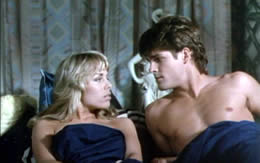 I was mostly happy. John Terlesky who played Mike, the first of the kids to get it, was my first choice to play the part ultimately played by Russell Todd. John came in and was just great. I said, "This guy’s really good." It’s one of those things where you know if someone’s got it, and John did. But Russell had just done Where the Boys Are ’84 and Jim had seen him in the theater, and he wanted that guy to be our hero. I like Russell enormously; he was tremendous to work with, but I thought John would’ve been better in that part. I was mostly happy. John Terlesky who played Mike, the first of the kids to get it, was my first choice to play the part ultimately played by Russell Todd. John came in and was just great. I said, "This guy’s really good." It’s one of those things where you know if someone’s got it, and John did. But Russell had just done Where the Boys Are ’84 and Jim had seen him in the theater, and he wanted that guy to be our hero. I like Russell enormously; he was tremendous to work with, but I thought John would’ve been better in that part.
How did they wind up switching roles?
What happened was Russell got the part John should have gotten. So I thought let’s give him the part of Mike. I got a phone call around 8 in the morning on a Saturday; I’m a complete night owl and had maybe three hours of sleep. He says, “I was talking to my agent, and they said I’ve got the part of Mike. But I auditioned for the part of Rick.” I said, " I know it seems like a consolation prize, but I thought you should be in the movie." I felt after that phone conversation we’d have real problems because we had a read-through at Corman’s office a week before we started shooting, and John seemed to be in a very bad mood. I thought, "uh oh, this guy’s gonna be a real pain in the ass." What happened was the complete opposite; John was fantastic, easy to work with. We personally bonded and are still the best of friends all these years later. When we started seeing his dailies, we thought he was sensational. You’ll notice he was always chewing gum in the picture; he had like five or six pieces of gum going at once at all times, just for that really annoying quality which we thought was hilarious. Roger thought John was really good, and because of Chopping Mall, John got Deathstalker II almost immediately afterwards. He’s directing for network TV now; he gave up acting some years ago because I don’t think he really liked it. I think his goal was always to direct.
How did you end up doing second unit directing on Chopping Mall?
I was in the office from the day we started the script through pre-production, into production, and through post. I was a co-producer without the title, basically, because I had a lot of input on all the decisions. In pre-production they kept giving me more second unit to do. Basically it was 20 days at the Galleria, then two days at the studio, or the "lumber yard" as it’s more famously known. So I wound up directing four or five actual scenes, and I shot virtually all the robot stuff when the principals weren’t in it as well as a little stuff when they were. For example, when Kelli runs out of Roger’s Little Shop of Pets, I grabbed her from first unit because we needed a shot of her exiting that store, but we didn’t have the store. So I did a pan across the sign, had Kelli step into frame, then run when she saw the robot. I got her running out of the store, and we never saw her exit the store! That night I proclaimed myself: "the king of cheats." The schedule was tight, and that’s how things came to me. I was on the set every night, even though I wasn’t paid for some of those.
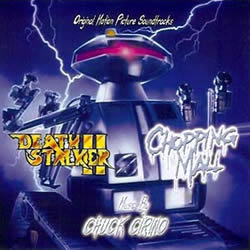 What involvement did you have with composer Chuck Cirino on Chopping Mall and his subsequent films? What involvement did you have with composer Chuck Cirino on Chopping Mall and his subsequent films?
I knew Chuck socially before I worked with him professionally. I knew him through JIm, and we all had film score fandom as a common bond. When Jim suggested Chuck for scoring Chopping Mall, it seemed like a perfect choice to me. I liked that Chuck was fond of theme and melody as well. I will never forget that Sunday morning when Jim and I ventured to hear some of the music for the first time. At the time, Chuck was working for Shadoe Stevens, who was otherwise known as "Fred Rated," the pitchman for the Federated department store, which was like a Best Buy back in the '80s. We went to Shadoe's production studio at the corner of Sunset and Doheny to hear Chuck's first efforts. There's always that moment of anticipation where you pray that you will love what you hear, and not the other way around. We sat down, and Chuck pressed the "play" button. Well, Jim and I were buggin'...we loved what we heard as music, but also Chuck found the sound of the movie, pure and simple. As I recall, we heard most of the score that day. Jim suggested a couple of very minor tweaks, but that was it. Chuck was pleased, and we were thrilled with all of his "robo" melodies.
The next time I heard the complete score was during the final sound mix which I was present for. I know all filmmakers love the scores to their films, but Chopping Mall is a score that I play often. I especially like some of the quiet, emotional moments. They contrast nicely to the action cues. The score just came out recently on CD, and while it is clearly a synth score from and of the '80s, I think it really holds up due to Chuck's strong fundamentals regarding melody and theme. Chuck scored a couple of the films I shot second unit on, but I never was a part of the scoring or mixing process. A shame, because it is a kick to be around a guy with such creative ability and enthusiasm. Chuck is a very talented composer, and a great guy.
![]](mitchellttwist.jpg) You reteamed with Jim next for Transylvania Twist; how did you approach doing a horror spoof? You reteamed with Jim next for Transylvania Twist; how did you approach doing a horror spoof?
It was written by R.J. Robertson, a good friend of Jim’s, and it was always designed as a spoof. I came on board and did a few days of second unit, plus the scene with Brinke Stevens where she was playing a Vampirella type in the parking lot at Corman’s in the middle of the night. Even though it was California, it was cold! Brinke was an absolute delight to work with; I loved working with her. Ace Mask, also in that scene, is also a very funny actor.
Were you aiming for a PG rating a la Saturday the 14th?
I wasn’t aware of that; most of my stuff was really pretty safe. I did a scene with Steve Franken and a bunch of the villagers on the way to the castle, and Steve is playing the burgomaster. He’s giving some classic horror movie crowd speech about “we must not falter in our purpose,” and a ball from the Phantasm movies hits him in the head. When I met Steve, it was all in one night. I said to him, "You know, you stole The Party from Peter Sellers. Every time you were on the screen, I couldn’t take my eyes off you." We’d go about our work and break for lunch, and Steve comes up and says, "You know what you said about The Party? Did you mean that?" He was acting like no one had ever given him a compliment. I said absolutely; I still see it today and think he’s hysterically funny. But he was a very sweet man and unbelievably humble.
Did you have Robert Vaughn in mind? Were you all huge U.N.C.L.E. fans, given the in-joke references to it in Chopping Mall?
Jim Wynorski loves The Man from U.N.C.L.E.! And Robert Short, who created the robots, loves it, too. So that triangular badge thing the robots had was “directly inspired” by the badges the agents used to wear at U.N.C.L.E. headquarters.
How different was Concorde Films over this three-year period?
Chopping Mall was one of their last films that went out theatrically. It was really only playing in a few areas to satisfy the Vestron contract, but in the mid ‘80s, I think Roger realized that releasing his stuff theatrically was going to lose him money. The ‘80s was good to Roger; it was the decade of the free lunch because he’d make the movies more or less for what he was being paid by the companies releasing them... so he never really lost any money as far as I know. He’s very proud of the fact that every movie he put out didn’t lose money, but the ‘80s was a really go-go, from the hip time, and Roger’s company was the epitome of that. I think what happened was Roger wanted to control the money, and he ultimately wasn’t satisfied with other companies releasing his material. Then he created his own home video label, and ultimately he did away with that because he did not like having the overhead that required. Also, he was making movies to satisfy a schedule in terms of keeping the lumber yard people busy; there was generally a new movie going into that “studio” every three weeks. It was sort of the tail wagging the dog a little bit, keeping his infrastructure going supported by x amount of movies over the course of the year.
What else did you work on during that period?
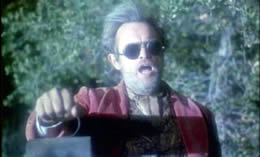 After that I did The Haunting of Morella's second unit with Jim, some simple stuff and a little live action. My director of photography was a guy named Stephen McNutt, who I believe wound up being the DP on the new Battlestar Gallactica. He was a good guy; I liked Steve. Morella was Jim trying to do his version of a Corman/Poe picture, and it was the first movie he did that was really a bit more serious. Plus it gave him a chance to work with David McCallum (again, he loves The Man from U.N.C.L.E.!). I’d say there are moments that have some artfulness to it. That was the one movie that proved to me that you can do some very imaginative stuff without very much money. The art director was a guy named Gary Randall who did some remarkable work; there are some scenes in this 1700s village, and if the camera had turned an inch to the left or right, you’d be off the set. I thought it was nicely photographed and had some good color design. I wound up doing second unit outside of the studio; we went to Malibu State Park for some of the exteriors. That was the movie where I met the late Lana Clarkson. Now, I’m 6’4”; Lana’s about 6’1”. She was the first woman I met who scared the hell out of me! Not because she was mean-spirited, but she was a lotta woman. Even though I don’t think I was working that night, that scene, where she’s topless by the grotto, we built at the studio. I wanted to be there for that! There was a lot of nudity that night, and it was cold! The lumber yard studio was not far from the Pacific Ocean in Venice Beach, plus it would get foggy down there. So it was cold and damp, two words I don’t usually associate with Southern California. Ultimately Lana was pretty pleasant to deal with; she kind of kept to herself, at least when I was around. After that I did The Haunting of Morella's second unit with Jim, some simple stuff and a little live action. My director of photography was a guy named Stephen McNutt, who I believe wound up being the DP on the new Battlestar Gallactica. He was a good guy; I liked Steve. Morella was Jim trying to do his version of a Corman/Poe picture, and it was the first movie he did that was really a bit more serious. Plus it gave him a chance to work with David McCallum (again, he loves The Man from U.N.C.L.E.!). I’d say there are moments that have some artfulness to it. That was the one movie that proved to me that you can do some very imaginative stuff without very much money. The art director was a guy named Gary Randall who did some remarkable work; there are some scenes in this 1700s village, and if the camera had turned an inch to the left or right, you’d be off the set. I thought it was nicely photographed and had some good color design. I wound up doing second unit outside of the studio; we went to Malibu State Park for some of the exteriors. That was the movie where I met the late Lana Clarkson. Now, I’m 6’4”; Lana’s about 6’1”. She was the first woman I met who scared the hell out of me! Not because she was mean-spirited, but she was a lotta woman. Even though I don’t think I was working that night, that scene, where she’s topless by the grotto, we built at the studio. I wanted to be there for that! There was a lot of nudity that night, and it was cold! The lumber yard studio was not far from the Pacific Ocean in Venice Beach, plus it would get foggy down there. So it was cold and damp, two words I don’t usually associate with Southern California. Ultimately Lana was pretty pleasant to deal with; she kind of kept to herself, at least when I was around.
I also did some second unit work on Munchie, the flying pizza stuff. That was a classic example of cleverness that didn’t cost any money. We rigged something up in front of the camera where a grip or a camera operator could rotate the pizza out of frame, so we drove around Santa Monica shooting live backgrounds with a first person POV of a pizza. Maybe for $19.14. Very clever, very cheap. The stuff I did there was much more traditional, but it was fun to do.
Your last regular feature, Against the Law, was also with Jim. What do you remember about the casting for Nancy Allen, Richard Grieco, and Nick Mancuso?
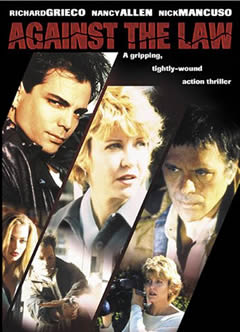 That’s a script I wrote with a guy named Bob Sheridan. I had the idea and then asked if Bob wanted to write it with me. I was used to writing with somebody, which means I was too scared to write by myself. I wrote it frankly with an eye towards directing it, and in fact, I’d written it with John Terlesky in mind for the lead killer who was ultimately played by Richard Grieco. Jim read the script, some time after we finished it. He was working with Andrew Stevens for a company called Sunset Films, basically a satellite company to Cinetel. Anyway, I was working in the animation business at the time when I got the phone call that he wanted to make the movie. We didn’t write it for Jim, just on our own; on spec. The money was not great, and it had to be split in half, but money was money and they were gonna make the picture, which mattered to Bob. So I kind of reluctantly sold it to Jim. That’s a script I wrote with a guy named Bob Sheridan. I had the idea and then asked if Bob wanted to write it with me. I was used to writing with somebody, which means I was too scared to write by myself. I wrote it frankly with an eye towards directing it, and in fact, I’d written it with John Terlesky in mind for the lead killer who was ultimately played by Richard Grieco. Jim read the script, some time after we finished it. He was working with Andrew Stevens for a company called Sunset Films, basically a satellite company to Cinetel. Anyway, I was working in the animation business at the time when I got the phone call that he wanted to make the movie. We didn’t write it for Jim, just on our own; on spec. The money was not great, and it had to be split in half, but money was money and they were gonna make the picture, which mattered to Bob. So I kind of reluctantly sold it to Jim.
I have very mixed emotions about Against the Law; I think it ultimately turned out to be one of Jim’s best movies, but there are a lot of things I’m not happy with. The casting was a lot of it. Bob Sheridan had a great line about Grieco; he was playing a character named Rex. He said, “Well, he’s not our Rex, but he’s a Rex.” I wasn't crazy about Nick Mancuso in his part; I didn’t think he was a bad actor – quite the opposite, I liked him. But that character was someone who grew up in the beach cities of California, who thought he could go in, do his 20, then go surfing. Nick doesn’t look like anyone who grew up in Santa Monica, Manhattan Beach, any of those places. I think Nick did a decent job though.
My big problem was and is Nancy Allen, who was cast because she was in Robocop, pure and simple. When we wrote it, there was an actress who was the female lead in An Eye for an Eye, Maggie Cooper. I was thinking of her, and that’s why her character’s named Maggie. That part could’ve been played by 200 prototypical B-movie actresses. The original choice was Nia Peebles; I wasn’t crazy about it since she wasn’t this WASP-y anchor type, but in retrospect, she would've been fine. I think Cynthia Gibb was also a choice. Then they got Nancy, who I just wasn’t a fan of. I also thought Nancy had had better days, looks-wise. I remember driving with Jim one day and he told me Nancy Allen was gonna play the part, and I got really mad. I used to be more of a hothead in my youth. I didn’t see the point of her in that part, but Jim said she’ll be good. How am I gonna argue with the director? Ultimately, I did not care for her in the part.
It wasn’t my dream cast, but the one person I thought was sensational was Steven Ford, who played the lieutenant. He was very busy in the ‘90s; he was one of the sergeants in Starship Troopers, and he’s the son of Gerald Ford. There’s a scene in the movie that I had to write where one of the executives asked why Nick Mancuso’s character drank. I hate exposition, like most writers, but they needed to know that trait. Huffing and puffing I said all right, I’ll do it. It’s the scene where Nick Mancuso’s new young partner is talking to the lieutenant about the two of them in the old days, and they came up in the department together. So I wrote this scene that talked about the day they were doing their job, and then something happened, and Nick Mancuso started drinking after that. I wrote it in my own personal world of protest. The movie gets shot, and we’re at a screening room at Photokem. So Terlesky’s there, and that scene’s done, and he turns around and gives me an enthusiastic thumbs up! So probably the best piece of writing is the one I didn’t want to do. Then there was a production moment where Nick and a security guard have a dust up in a bar, and I happened to go to the set that day somewhere in East L.A. in some rundown joint. I see Nick rehearsing with the stuntman actor, and it’s just a fight, a disagreement, then becomes a nasty ass fight. I asked Jim, when’s the last time you read the script? It’s not a fight, it’s an argument punctuated with a moment of violence. Jim said I think it’ll work, and I stormed out furious because I didn’t think Jim understood the meaning of the scene. I thought maybe he didn’t understand the meaning of any scenes! I drove around the freeways for about two hours fit to be tied, I was so mad. The scene in the movie doesn’t bother me that much, but this is a movie that in my mind, I was directing it in my hand, and that’s not what I envisioned. However, there is one scene, the climax at the end, where’s there’s --as Bob and I called it-- the shootout at the end of the world, the classic western shootout. I thought Jim did a great job visualizing that scene; I thought it was one of Jim’s best bits of filmmaking because he understood the kind of western iconography of that moment. Instead of having it be a dusty street, it was a beach in California. It was a nice combination, and he did a great job with that. I was surprised and really happy with that. Overall I’m pretty happy with the way the movie turned out. Also, I should point out Jaime Pressly plays the waitress at the beginning. It might have been her first role. I know when I saw her, she made that scene way better than it was written. It’s a fantastic lesson that the best friend a writer could have is good actors. The sad part about that movie was there was no wrap party; there were some people I would’ve thanked for being so good with the material and running with it. Having great actors do your work can be thrilling.
How did you get into writing for animated TV? What was the work process like?
I 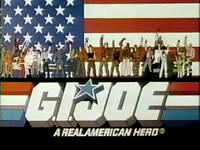 was working in comic books as an inker. When I moved to California, Steve Gerber, who knew me from New York, and his girlfriend both thought I would be a pretty good animation writer because I was so into film. I had no desire to write animation, but they actually pitched it to me as writing action movies, not cartoons. My first gig was writing for G.I. Joe, but then Chopping Mall happened at the same time so I kind of juggled that and comics. I’m not sure how I did it, but I did. For the two months or so I was involved in Chopping Mall, that was the most important thing in my universe. Transformers was easy; the non-military, non-action stuff was really hard. When I wrote for Sunbow back in the ‘80s, the money was terrific and better than the animation standard at the time. But I learned a valuable lesson: never write anything you don’t want to see. G.I. Joe and Transformers were fine; Jem and the Holograms, My Little Pony – not so much. was working in comic books as an inker. When I moved to California, Steve Gerber, who knew me from New York, and his girlfriend both thought I would be a pretty good animation writer because I was so into film. I had no desire to write animation, but they actually pitched it to me as writing action movies, not cartoons. My first gig was writing for G.I. Joe, but then Chopping Mall happened at the same time so I kind of juggled that and comics. I’m not sure how I did it, but I did. For the two months or so I was involved in Chopping Mall, that was the most important thing in my universe. Transformers was easy; the non-military, non-action stuff was really hard. When I wrote for Sunbow back in the ‘80s, the money was terrific and better than the animation standard at the time. But I learned a valuable lesson: never write anything you don’t want to see. G.I. Joe and Transformers were fine; Jem and the Holograms, My Little Pony – not so much.
How conscious were you that these shows were primarily designed to sell toys?
We were given characters and vehicles. Your show had to have these three characters minimum in an episode and X amount of vehicles that were proscribed to us. While we all understood that this was a way of marketing the toys, it wasn’t really an insurmountable task. Sometimes knowing who the characters would be made it easier to plot a story.
What are your other projects besides writing?
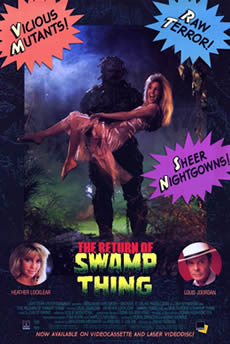 I was working in the animation business, like the Spawn animated series. I was still doing comics, and for the last eight years I’ve also been writing, doing DVD special features. I also did an uncredited rewrite on The Return of Swamp Thing. Jim was hired by Michael Uslan to direct it, and he was not happy with the script. So Jim called me up and John Terlesky and said, "Fellas, I’ve gotta rewrite certain parts immediately." I read it and could see why; it had some problems, not the least of which was one of the mutations in that movie was supposed to be a giant baby whose name was "Gaga." Just looking at it cold on the page, I thought, this is stupid and would look stupider in the movie. I rewrote that and turned it into the scene where the ATF agents are lost in the swamp and are attacked by a creature I created called "The Leech." Berni Wrightson had done a drawing, I can’t remember what it was for back in the ‘70s. Just some basically humanoid-looking leech with these big eyes and a round sucker. That was my inspiration for the scene that I rewrote. Unfortunately somewhere between what I was inspired by and the end result, it looked more like an elephant guy with a long snout. It just looked weird. I also did some of the scenes with the two kids, very quickly. Once again I was involved in casting with Jim and John, and that was an interesting couple of weeks. Traci Lords came in to audition for the lead; Jim had worked with her and wanted to continue. Traci was awful, at least for this part. Then Betsy Russell came in, and I think we were all very taken by her. Before she would do a scene, she’d do some yoga-like stretch to limber up, and she was just plain sexy. We were all captivated by her in pre-audition mode. Betsy was a fairly serious candidate for it, but I don’t think she was enough of a real name to satisfy the producers. One day we heard Heather Locklear would come in to read. This was post-TJ Hooker and right before she went on to Dynasty; she was kind of at a low point, which is why she would do it. The word from New York from RCA Home Video was to audition her. If she’s a 5 on a scale of 1 to 10, give her the part. So Heather came in, and she was incredibly pleasant. Prettier than she is on TV if that’s possible, and she was all right. That’s how she got the job. We spent weeks auditioning the women for that part, and some really good actresses came in who weren’t names yet. They wanted another name to go with Louis Jourdan because he’d been locked. I thought I’d direct second unit on that one, but they didn’t want to fly me to Georgia. I think that was at the time Jim’s largest budget, around two million. It’s amazing how back in the ‘80s and early ‘90s, movies that weren’t going to be theatrical had reasonable budgets. Here we are 20 some odd years later, and if a movie’s thought of as being direct to video, the budgets are way lower. Most aren’t even made for video unless they’re pre-sold to SyFy, Lifetime. The whole notion of direct to video is almost extinct. Nowadays they’re almost always busted theatricals. I miss the simplicity of getting things done; someone would say an idea and it would be “all right, sounds good, let's make it.” I was working in the animation business, like the Spawn animated series. I was still doing comics, and for the last eight years I’ve also been writing, doing DVD special features. I also did an uncredited rewrite on The Return of Swamp Thing. Jim was hired by Michael Uslan to direct it, and he was not happy with the script. So Jim called me up and John Terlesky and said, "Fellas, I’ve gotta rewrite certain parts immediately." I read it and could see why; it had some problems, not the least of which was one of the mutations in that movie was supposed to be a giant baby whose name was "Gaga." Just looking at it cold on the page, I thought, this is stupid and would look stupider in the movie. I rewrote that and turned it into the scene where the ATF agents are lost in the swamp and are attacked by a creature I created called "The Leech." Berni Wrightson had done a drawing, I can’t remember what it was for back in the ‘70s. Just some basically humanoid-looking leech with these big eyes and a round sucker. That was my inspiration for the scene that I rewrote. Unfortunately somewhere between what I was inspired by and the end result, it looked more like an elephant guy with a long snout. It just looked weird. I also did some of the scenes with the two kids, very quickly. Once again I was involved in casting with Jim and John, and that was an interesting couple of weeks. Traci Lords came in to audition for the lead; Jim had worked with her and wanted to continue. Traci was awful, at least for this part. Then Betsy Russell came in, and I think we were all very taken by her. Before she would do a scene, she’d do some yoga-like stretch to limber up, and she was just plain sexy. We were all captivated by her in pre-audition mode. Betsy was a fairly serious candidate for it, but I don’t think she was enough of a real name to satisfy the producers. One day we heard Heather Locklear would come in to read. This was post-TJ Hooker and right before she went on to Dynasty; she was kind of at a low point, which is why she would do it. The word from New York from RCA Home Video was to audition her. If she’s a 5 on a scale of 1 to 10, give her the part. So Heather came in, and she was incredibly pleasant. Prettier than she is on TV if that’s possible, and she was all right. That’s how she got the job. We spent weeks auditioning the women for that part, and some really good actresses came in who weren’t names yet. They wanted another name to go with Louis Jourdan because he’d been locked. I thought I’d direct second unit on that one, but they didn’t want to fly me to Georgia. I think that was at the time Jim’s largest budget, around two million. It’s amazing how back in the ‘80s and early ‘90s, movies that weren’t going to be theatrical had reasonable budgets. Here we are 20 some odd years later, and if a movie’s thought of as being direct to video, the budgets are way lower. Most aren’t even made for video unless they’re pre-sold to SyFy, Lifetime. The whole notion of direct to video is almost extinct. Nowadays they’re almost always busted theatricals. I miss the simplicity of getting things done; someone would say an idea and it would be “all right, sounds good, let's make it.”
Have you always been a TV junkie?
Crime shows especially, more selective with westerns. I was never a fan of “oaters” per se, but I love TV crime shows. I love spy shows, war shows. I like certain dramas. If a guy carries a badge and has a shoulder holster, I’m generally there. Except I couldn’t stand Dragnet; I tried, couldn’t do it!
What TV shows would you love to see released on DVD?
Well, N.Y.P.D. and Police Story. Season four of Kojak (the actually produced in New York season). I wouldn’t mind if Twelve O’ Clock High came out, at least the first season. The rest of Third Watch. And the miniseries World War III and the rest of The Equalizer! Also in the guilty pleasure department, the rest of TJ Hooker.
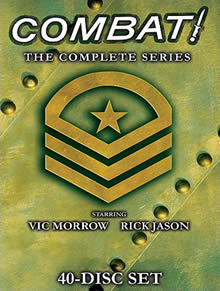 When you produce a DVD set, how do you go about determining who to approach first? When you produce a DVD set, how do you go about determining who to approach first?
I had a pretty fair amount of experience doing film journalism in New York working for Filmmakers’ Newsletter, a monthly that later became Filmmakers’ Monthly, appropriately. I’m nosy by nature; I like to know when things were done, who did them, how, did they work, etc. I got away from that doing comics, working for DC and Marvel. Steve Rubin, who I was partnered with on some projects that never got produced, called me and said Combat! was being produced for DVD. I was a monster Combat! fan, and we were both war movie fans. We called Image up and said we were the guys to do it, and we figured it would be a way to get our foot in the door. It’s Combat!, for crying out loud! I wanted to talk to the people who did those shows. Image was happy with what I did; the series sold, and I continued with the other seasons. Considering the restraints on time and budget, I’m proud of what I did. The only sad part was not being able to meet Vic Morrow. I was having lunch at a nearby Mexican restaurant, and George Fenady said “You would’ve just loved Vic, and I think he would’ve loved you, too.” That was a great moment, and really sad for me as well because I would never get to meet Vic. Moments like that with George, however, were one of the real perks of doing the extras on Combat!
If you could do any special edition, what would it be?
I’d like to do special features for Police Story. I thought it was a remarkably good series with the Emmy nominations to back it up. I found it very compelling even though it didn’t have the same cast every week, which his probably why it’s not on DVD right now. It didn’t have a star who people got attached to. They didn’t do much with Miami Vice; that would’ve been great. It’s a shame no one did much for The Rockford Files or any Stephen Cannell shows; I’d love to do special features with and or about Stephen Cannell. There was a time in TV history when he was the best commercial writer of television in television. It’s too bad most of his shows never got much special features coverage.
|
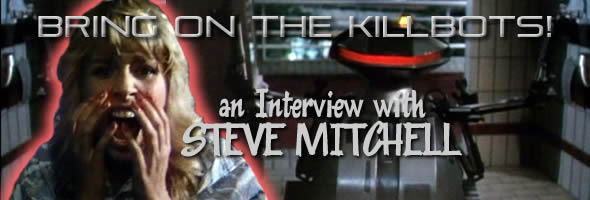

![]()